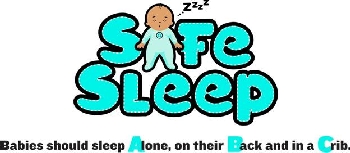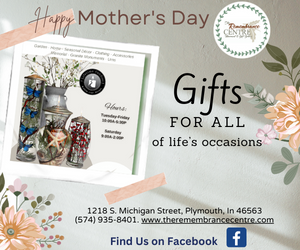 As you may have heard in recent months, Marshall County has embarked upon a large but important task in the child welfare realm: that of PREVENTION of child maltreatment. Prevent Child Abuse Marshall County began forming in late September and is now a chartered council of Prevent Child Abuse Indiana thanks to the support of Marshall County Prosecuting Attorney Nelson Chipman and his office. In addition, the council is in the process of becoming a stand-alone nonprofit organization thanks to local attorney Adam Lukenbill and CPA Jared Weidner and their time and expertise they have donated to the council efforts. The purpose of a prevention council is that ofprimary prevention. In its most simplistic definition, primary prevention are efforts geared towards the general public (not any specific or targeted population). Marshall County has a local Department of Child Services (DCS) office as well as a Court Appointed Special Advocate (CASA) program that are both important and instrumental in ensuring the safety of children and their best interests through the family court system once abuse or neglect has been identified. The ideal of a prevention council is to put resources and education in place to try and prevent children from having to enter the family court system because there is ALWAYS trauma involved in being part of the family court system. The pinwheel is a widely used symbol for prevention of child abuse because it represents what we want for all children: a safe and happy childhood free of abuse and neglect.
As you may have heard in recent months, Marshall County has embarked upon a large but important task in the child welfare realm: that of PREVENTION of child maltreatment. Prevent Child Abuse Marshall County began forming in late September and is now a chartered council of Prevent Child Abuse Indiana thanks to the support of Marshall County Prosecuting Attorney Nelson Chipman and his office. In addition, the council is in the process of becoming a stand-alone nonprofit organization thanks to local attorney Adam Lukenbill and CPA Jared Weidner and their time and expertise they have donated to the council efforts. The purpose of a prevention council is that ofprimary prevention. In its most simplistic definition, primary prevention are efforts geared towards the general public (not any specific or targeted population). Marshall County has a local Department of Child Services (DCS) office as well as a Court Appointed Special Advocate (CASA) program that are both important and instrumental in ensuring the safety of children and their best interests through the family court system once abuse or neglect has been identified. The ideal of a prevention council is to put resources and education in place to try and prevent children from having to enter the family court system because there is ALWAYS trauma involved in being part of the family court system. The pinwheel is a widely used symbol for prevention of child abuse because it represents what we want for all children: a safe and happy childhood free of abuse and neglect.
Many agencies involved in child welfare have been meeting to discuss a growing problem in Marshall County and across Indiana- that of unsafe sleep practices for babies. The local child protection team, the local child fatality review team, the local DCS office and CASA, the prosecutor’s office, the Marshall County health department, WIC, the Women’s Care Center, the Purdue Extension office as well as Prevent Child Abuse Marshall County have all been meeting to discuss launching a safe sleep campaign to reach out the public about this identified need in our community.
What is safe sleep? According to the Indiana State Department of Health, 14% of infant deaths in 2013 were due to Sudden Unexplained Infant Deaths or SUIDS. This number includes babies who die of SIDS or accidental suffocation in bed. Sleep related deaths including accidental suffocation and SIDS are the leading causes of death in babies 1 month to 12 months of age. There are many resources out there that address needs of families who either do not have a safe place for a child to sleep OR do not know what a safe place for a child to sleep looks like. The struggle has been getting that consistent information out to the general public in a clear and concise manner. That is the goal of the safe sleep campaign that Prevent Child Abuse Marshall County has launched.
The American Academy of Pediatrics and the National Institute of Health are clear on their definition of safe sleep practices: Babies sleep best ALONE, on their BACK, in a CRIB (The ABC’s of Safe Sleep!) According to literature from Indiana WIC, a crib is defined as a firm sleep surface (like a mattress in a safety-approved crib covered by a fitted sheet only). Many unsafe sleep situations occur during feeding times when parents may fall asleep with a baby in bed. Any substances that may enhance the likelihood that a caregiver becomes lethargic while feeding the baby increases the risk that they may fall asleep and put the baby at risk of suffocation. Therefore, it is important not to drink alcohol or take illegal drugs while caring for an infant. It is also a good idea to monitor any over-the-counter medication that may also make you tired when caring for an infant. Babies should be put on their back in a separate, safety-approved sleep area when you are finished feeding them. This may be a crib, bassinet or portable play area in your room but the key is that the sleep area should be separate from where anyone else (adults or children) sleep. For more information about WIC, please visit the website at WIC.in.gov.
The Purdue Extension Office has offered some great resources as well for making a safe sleep environment for an infant. They recommend that babies should be placed on their backs to sleep (even for naps) during the first year of age. Side sleeping is not safe and not advised. A firm surface can be a crib, bassinet or portable crib/play yard that meets accepted safety standards. This does NOT include: a swing, a bouncy seat, an infant carrier or a car seat. Babies should not sleep on couches or chairs with you or anyone else. A baby should not be fed on a couch or armchair because it is easy for the caregiver to fall asleep. Soft objects (like stuffed toys) and loose bedding should be kept out of the sleeping area. That includes pillows, comforters, blankets, sheets and bumper pads. If the baby needs extra layers for warmth, use a wearable blanket or other sleeper (never loose blankets). Pacifiers are acceptable if desired during nap or bedtime but should not hang on the baby’s neck. Breastfeeding can help reduce a child’s risk of SUID. Breast milk is easily digested, and the baby will wake more easily and more frequently, thus reducing the risk of SUID. Room-sharing is different than bed-sharing! While room-sharing is acceptable (placing a safe sleep environment for a baby in the caregiver’s room), bed-sharing is NOT recommended. This includes other children as well.
If you do not have an acceptable, safe sleep environment for your infant, there are resources available. The IN Safe Sleep Collaborative Program has been expanding in recent months and each region has distribution centers for Infant Survival Kits. These are for families that may not have safe places for infants to sleep. This INCLUDES caregivers and noncustodial parents also! As part of the program, a number of educational materials are provided that will help caregivers learn more about safe sleep, prenatal care and smoking cessation. They also discuss the benefits of breastfeeding, especially as it is related to maintaining a safe sleep space for baby by room-sharing. The caregiver would receive a pack n play, a fitted crib sheet with a safe sleep message, a sleep sack, a pacifier and educational materials. This is NOT limited to those only in financial need, on Medicaid or food stamps, TANF or WIC. The only requirement is that the caregiver receive the education and they demonstrate the ability to tear down and set up the pack n play. In our region, these survival kits can currently be accessed through the Memorial Hospital BABE Program (574) 647-2173 and the Elkhart County Health Department (574) 522-0104. In addition, the Women’s Care Center in Plymouth is planning to also become an access site for Marshall County! They also have a crib club program and anyone wishing for information on obtaining education and a crib as a result can contact the Women’s Care Center at (574) 936-5141.
For more information on Safe Sleep, you can visit www.in.gov/dcs/2869.htm. Please stay tuned for more information on safe sleep from Prevent Child Abuse Marshall County and collaborating agencies. We would like to see ZERO unsafe sleep deaths in Marshall County in 2016 and the way to this goal is through education!!!
Provided by Prevent Child Abuse Marshall County














